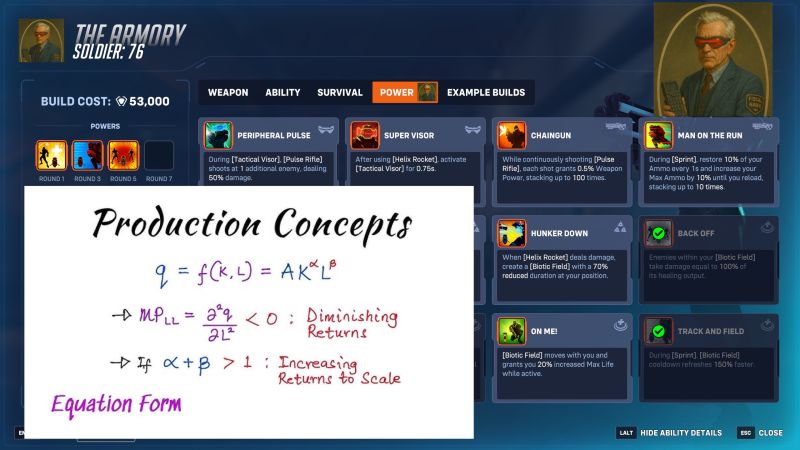
Overwatch Uses This One Content Productivity Hack
Journal 5 Phillip Black May 15

𝗢𝗩𝗘𝗥𝗪𝗔𝗧𝗖𝗛 𝗨𝗦𝗘𝗦 𝗧𝗛𝗜𝗦 𝗢𝗡𝗘 𝗖𝗢𝗡𝗧𝗘𝗡𝗧 𝗣𝗥𝗢𝗗𝗨𝗖𝗧𝗜𝗩𝗜𝗧𝗬 𝗛𝗔𝗖𝗞 Overwatch’s new Stadium mode officially marks the launch* of Overwatch 2, building on the previous release’s perk system. Inside Stadium, there’s one content productivity hack, known previously only to the savviest Steam roguelike indie developers: conditional passives.
Retention is the sum of each piece of content multiplied by the level of retentive units that content adds. For example, a profile picture may be low-cost but will likely add only a few units of retention per profile picture. In a world where titles like Call of Duty employ thousands of developers, the counter-thesis can’t be to just produce smarter, but under an entirely different system instead.
FPS developers quickly realized that map packs are poor retentive units producers. Packs typically resulted in a 2-3 week bump in week-over-week retention before resuming long-run equilibrium. The framework was busted too: the value of maps depended on having other players who owned them to play together. Guns didn’t work either: shooter players usually only equip two weapons, so it’s hard for them to utilize more during a match. Players are always solving for the optimal gun, so like maps, it’s a brief love affair before resuming their previous meta loadout.
Introducing characters in Shooters seemingly altered the equation: players must understand each character’s advantage and how 𝘰𝘵𝘩𝘦𝘳 choices affected them. New characters create choice ripples! Balance became paramount, and cheap content to produce. Balance changes amount to an equilibrium reshuffle in PvP environments; the search for dominant strategies in an ever-shifting equilibrium is the game itself.
Stat changes are cheap with near-zero marginal cost: an item with +10 health comes for free after an item with +5 exists. However, marginal benefit exists as a system. If gameplay comes from theory crafting, building a Rube Goldberg machine is far more exciting for the brain. Inside one system, a +10 health item might produce a little retention, while another might produce a lot.
Stadium’s hack is “powers” or 𝘤𝘰𝘯𝘥𝘪𝘵𝘪𝘰𝘯𝘢𝘭 𝘱𝘢𝘴𝘴𝘪𝘷𝘦𝘴: low‑cost stat bonuses that activate when a player does something they already do – jump, shoot from behind, etc. Because the trigger is embedded in normal play, the passives feel rewarding without adding mental load. Each passive is cheap to make yet interacts with dozens of existing abilities, maps, and team compositions, giving exponential strategic 𝘢𝘯𝘥 gameplay variety. The result is a modular and scalable system that, most importantly, produces many retentive units.
Productive systems beat expensive assets. Marvel Rivals’ six-week character releases seem ungodly to Western developers, but it remains to be seen if this supply-side assault attracts retention. In the meantime, Overwatch appears to have set up a longer-retentive engine at a fraction of the marginal developer cost.







